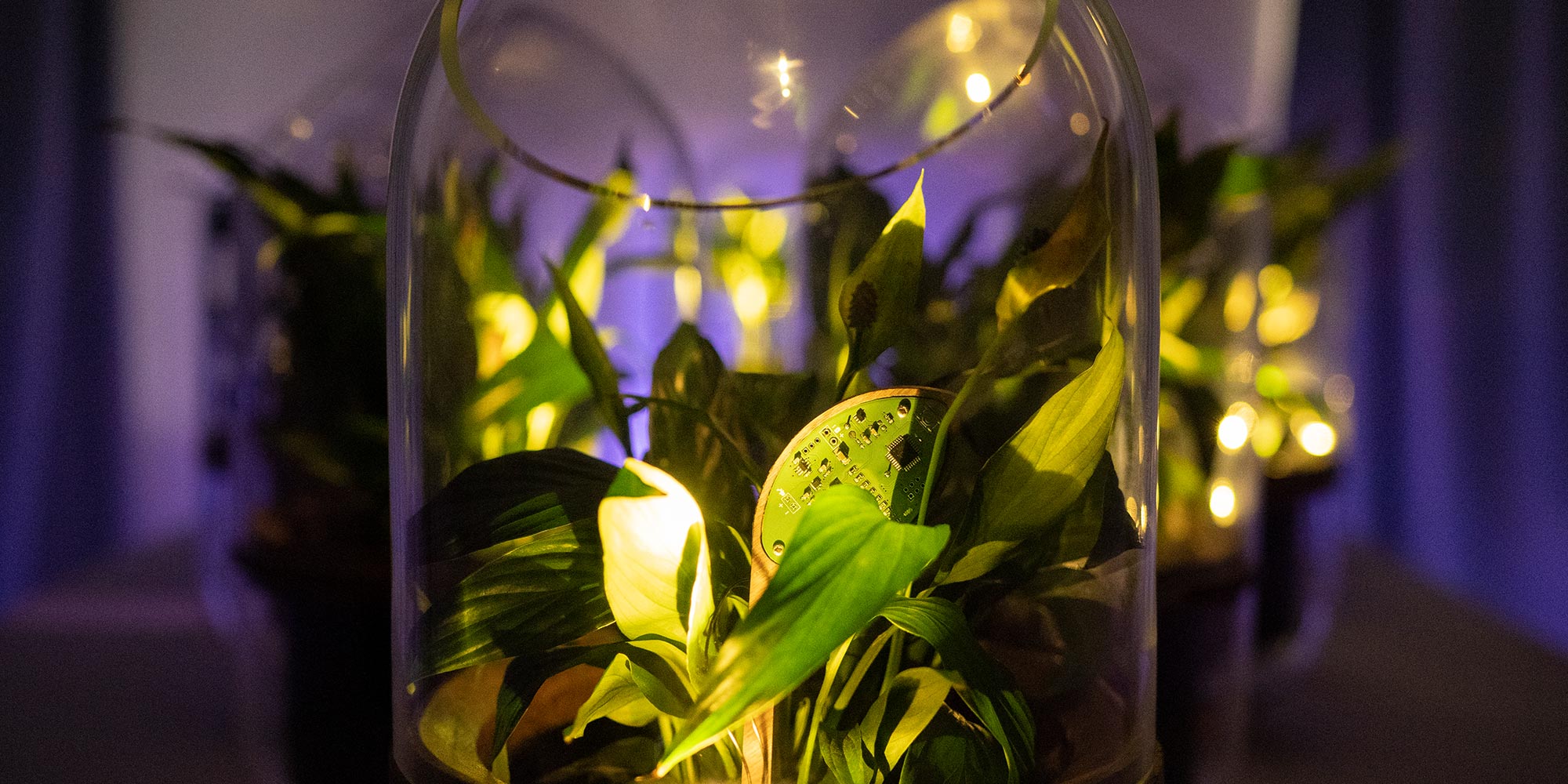Honorary Mention
There is a ground-breaking technology, called Microbial Fuel Cell (MFC) technology. This technology enables us to generate energy from organic waste: from compost to mud, from urine to plants. All organic waste streams are turned into sustainable energy sources thanks to this innovative technology.
MFC technology was included in the European Commission’s ‘100 radical innovation breakthroughs for the future’ report in 2019, acknowledging the importance of the development of this sustainable technology. The Living Light project is there to give this promising technology the attention it deserves and is the living proof that this technology can already provide us with enough energy to design practical applications.
Up until now MFC technology has been investigated in laboratories all over the world but attempts to implement this promising technology in the real world have been limited. The Living Light indoor design lamp and the outdoor park modules are the first light applications making use of this technology to provide you with energy. Microbial Fuel Cells for the Living Light collaborate with the naturally occurring microbes in the soil to generate energy. MFC technology is comparable with the solar cell of twenty years ago, standing on the brink of becoming a welcome contribution to the renewable energy mix. The Living Light is there to inspire others to develop this technology to the fullest and to tell the story of MFC technology in a magical way.
Before the Living Light project, people were skeptical about the use of this sustainable energy source for practical applications. Now our ‘Park of Tomorrow’—the Living Light Park—and our indoor Living Light lamps are the first global example that we can already use this promising technology to light up houses and parks. We want to make sure that the Living Light project is just the beginning of this impactful technology to change our energy systems and the way we think about and take care of nature.

Credits
With the Living Light project we collaborate across industries: design, science, and biology are being combined in order to create the Living Light. Credits go to our scientific partner Plant-e, who developed the microbial fuel cell over the past ten years.
Credits go to the Nova Innova team, working the last few years full of dedication, voluntarily on the project, as they believe in a future where nature is part of our energy system.
Thanks to the Nova Innova team, we turned the Living Light lamp into a practical and powerful storytelling object: softly stroking the leaves transforms this ordinary plant into a Living Light. If you provide the plant of the Living Light design lamp with love, you receive love from the plant in terms of light. In this way, your touch is the light switch of the Living Light. Furthermore, the Nova Innova team made sure that the duration of light depends on the wellbeing of the plant: the better you take care of the plant, the more energy you will receive from the plant. In this way the Nova Innova team wanted to remind us once more that if we take good care of nature, nature will provide us with everything we need.
Credits go to our early adopters who are there to advise, guide, and support us, even when working on an innovation that combines design, nature, and science becomes quite challenging. Credits go to all the professionals and individuals who believe as much in this circular way of creating energy as we do.
With support from
Next to the early adopters, who were wonderful enough to buy the first design Living Light lamps, give them a home, and monitor them closely, we received support from the municipality of the Hague and Rotterdam, for which we integrated the Living Light system into their parks. We are grateful for the 2700+ pre-orders we already received for the Living Light indoor design lamp and the conversations we have with partners to integrate the outdoor Living Light park modules in different cities, and potentially different countries. We appreciate the enormous amount of media attention we received from Vattenfall, the World Economic Forum, and national television, who all believe in the power behind this important project, and the support we received from farmers, plant growers, and architects, who believe that plants should be part of our energy system.
Nova Innova (NL) is a creative start-up based in Rotterdam that combines nature, science, and design to generate crucial, sustainable breakthroughs. There are many interesting things happening in laboratories all over the world, which remain invisible to the general public. The team of Nova Innova aims to bridge the gap between science and everyday life, by developing sustainable applications in the shape of a powerful design. Nova Innova’s aim is to inspire others by their collaboration with nature, and to develop important technologies that contribute to clean and sustainable water, air and energy systems with their practical applications.
Jury Statement
Microbial Fuel Cell technology (MFC), the idea of using microbes to produce electricity, has been known since 1911, when Michael Cressé Potter made the subject public. In Pop Culture, the banana fed time machine was able to send mad scientists ’Back to the Future‘. But The Living Light is different—it is a practical approach to literally illuminate the mutual dependence between nature and mankind. The Living Light is about to implement Plant Microbial Fuel Cell technology in our day-to-day lives—reaching from your indoor plant providing light at home to illumination in urban parks, powered by the organisms in the soil. The Living Light is a beautifully crafted beacon into a future, where life itself can contribute to our civilization, replacing endless numbers of batteries. Especially interesting for STARTS is The Living Light as an eye opener for the engineers of the sensory based Internet of Things, where many small devices will need weak energy sources that cannot be maintained by a complicated energy network or batteries.



